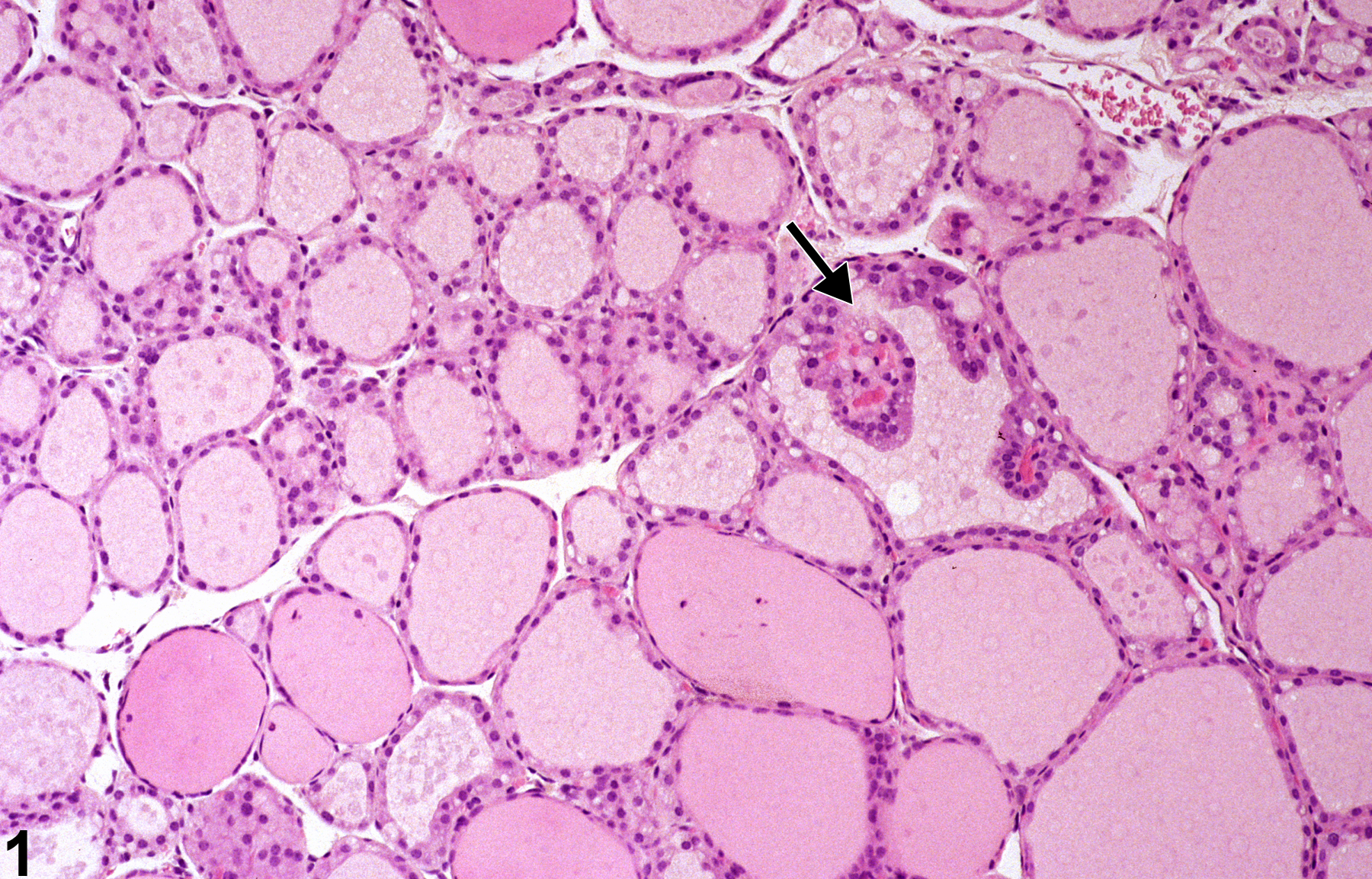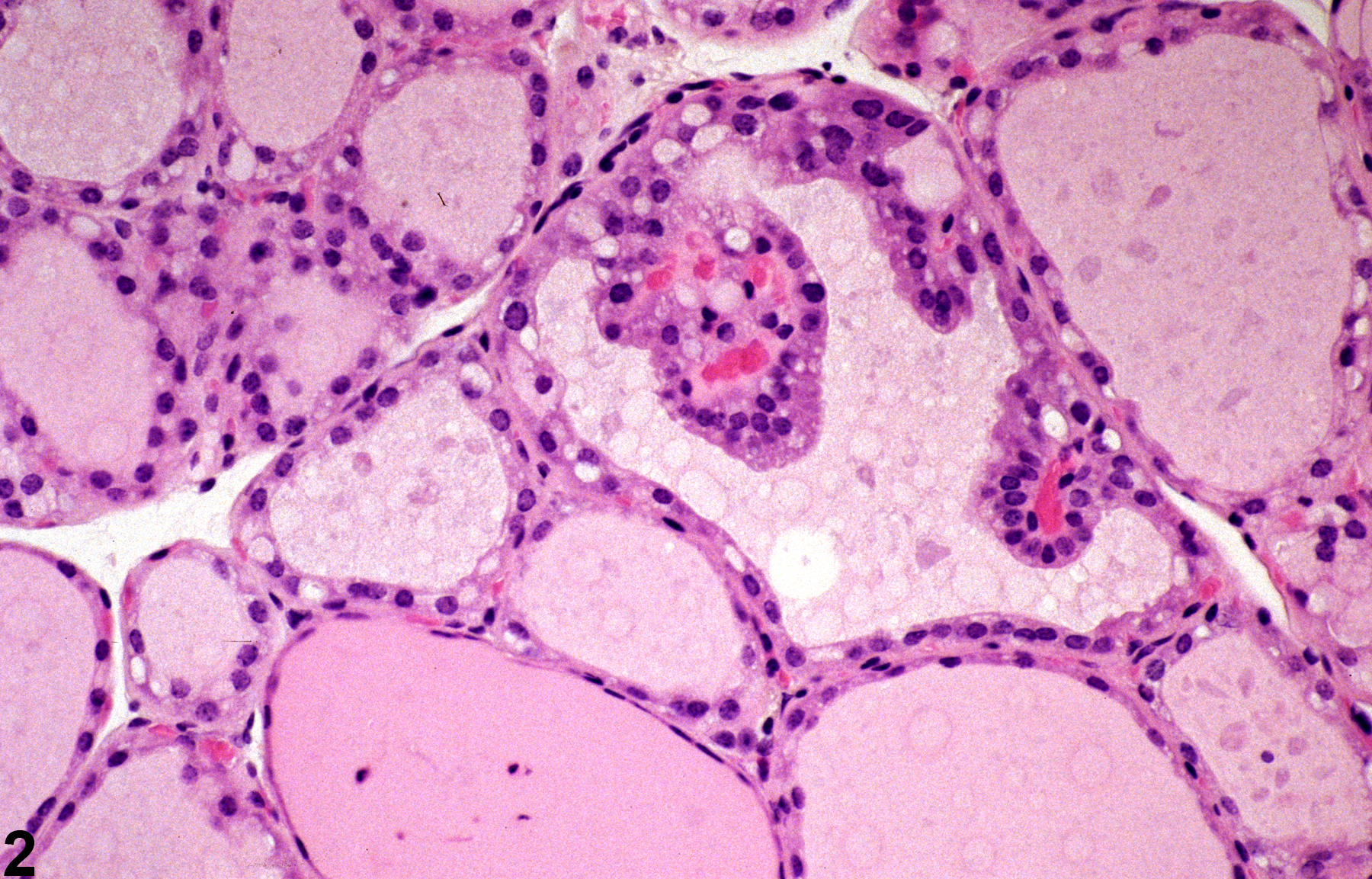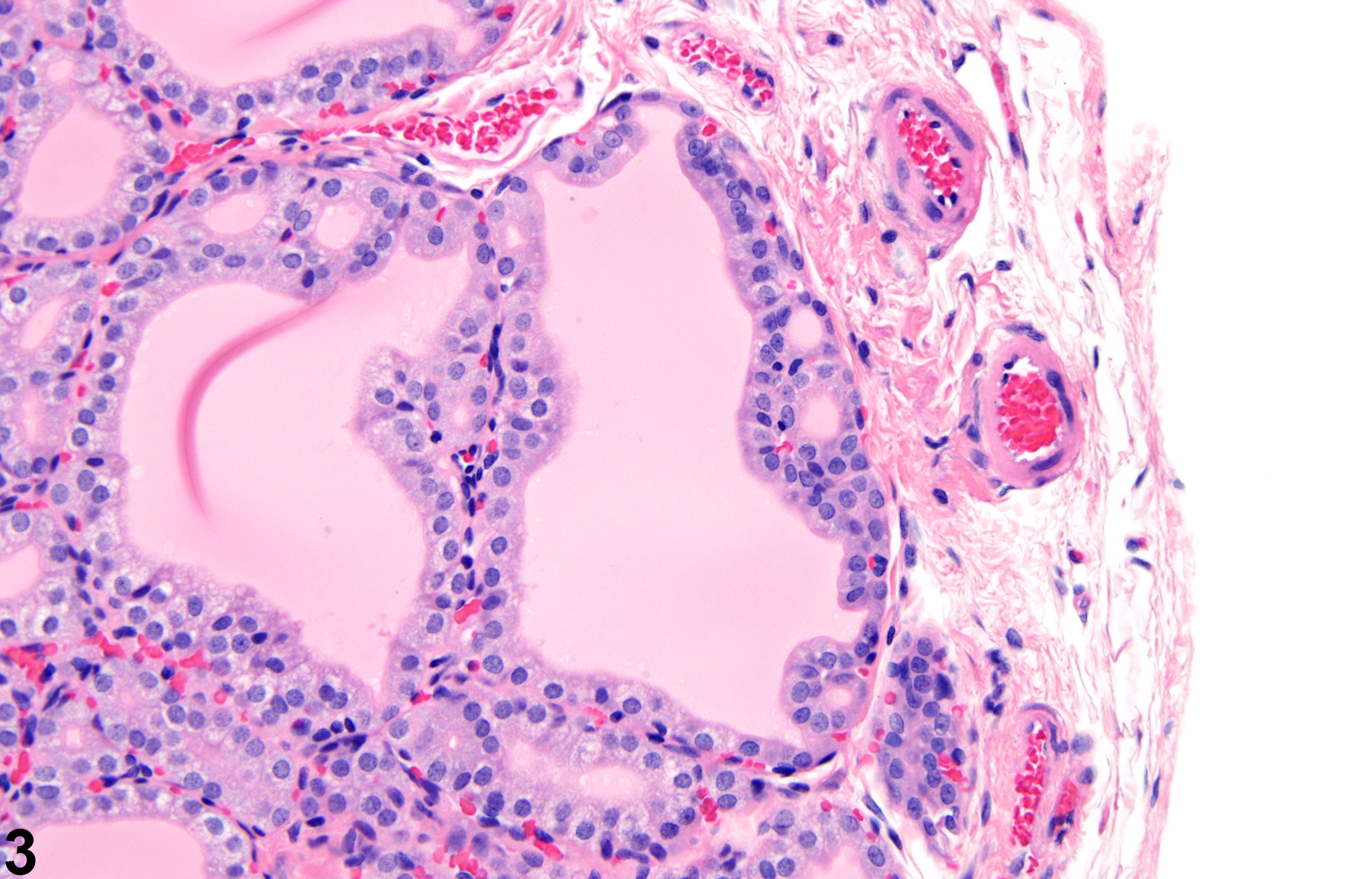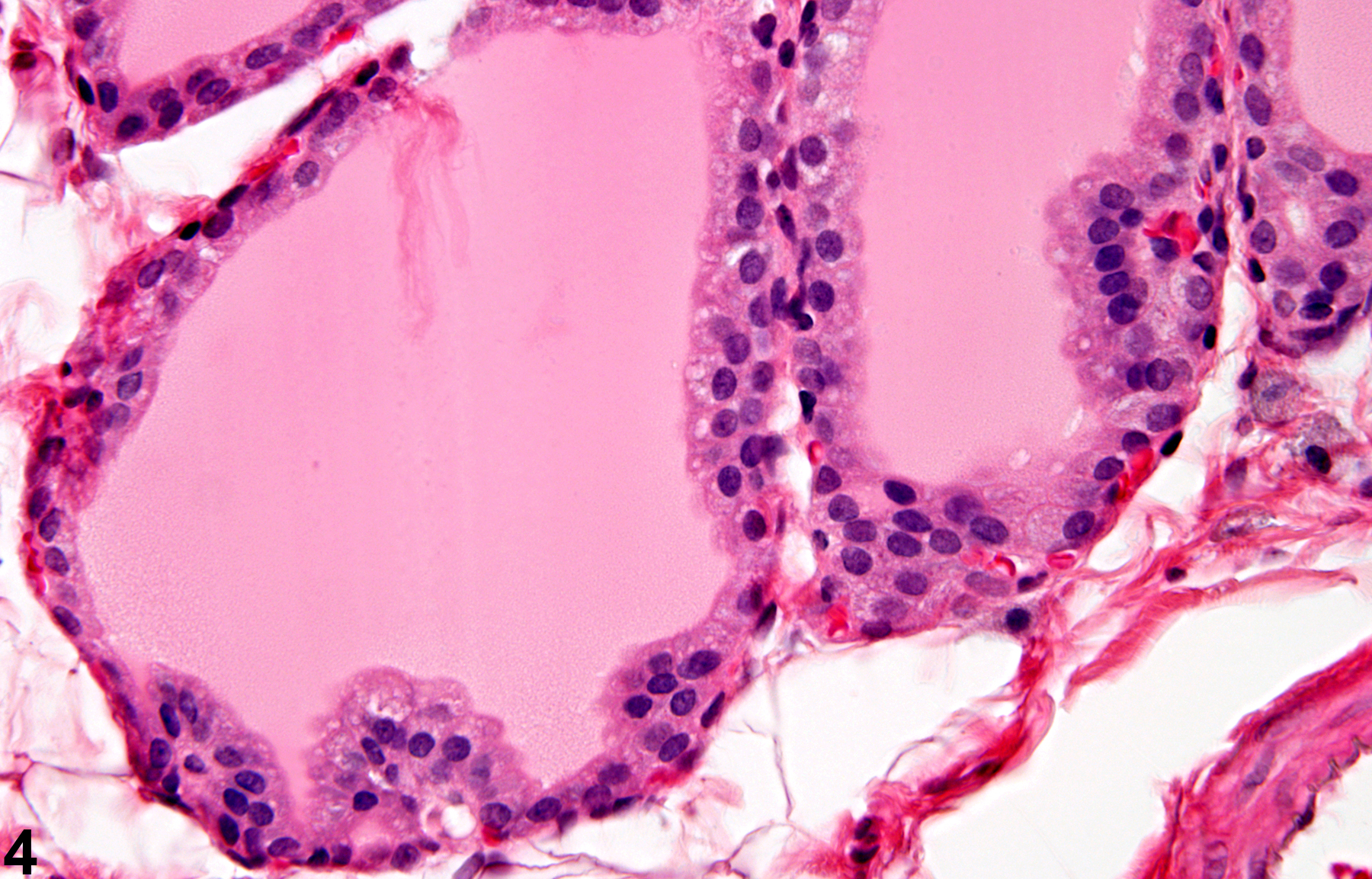Endocrine System
Thyroid Gland, Follicle, Epithelium - Hyperplasia
Narrative
Capen CC, Martin SL. 1989. The effects of xenobiotics on the structure and function of thyroid follicular and C-cells. Toxicol Pathol 17:266-293.
Abstract: http://www.ncbi.nlm.nih.gov/pubmed/2675279Capen CC, DeLellis RA, Yarrington JT. 2002. Endocrine system. In: Handbook of Toxicologic Pathology, Vol 2 (Haschek WM, Rousseaux CG, Wallig MA, eds). Academic Press, New York, 681–783.
Abstract: http://www.sciencedirect.com/science/book/9780123302151Collins WT, Capen CC, Kasza L, Carter C, Dailey RE. 1977. Effect of polychlorinated biphenyl (PCB) on the thyroid gland of rats. Ultrastructural and biochemical investigations. Am J Pathol 89:119-136.
Abstract: http://www.ncbi.nlm.nih.gov/pubmed/199066Greaves P. 2007. Histopathology of Preclinical Toxicity Studies: Interpretation and Relevance in Drug Safety Evaluation, 3rd ed. Academic Press, Amsterdam, 819-839.
Abstract: http://www.sciencedirect.com/science/book/9780444527714Hardisty JF, Boorman GA. 1990. Thyroid gland. In: Pathology of the Fischer Rat: Reference and Atlas (Boorman GA, Eustis SL, Elwell MR, Montgomery CA, MacKenzie WF, eds). Academic Press, San Diego, 519–536.
Abstract: http://www.ncbi.nlm.nih.gov/nlmcatalog/9002563Hardisty JF, Boorman GA. 1999. Thyroid and parathyroid glands. In: Pathology of the Mouse: Reference and Atlas (Maronpot RR, Boorman GA, Gaul BW, eds). Cache River Press, Vienna, IL, 537–554.
Hood A, Hashmi R, Klaassen CD. 1999. Effects of microsomal enzyme inducers on thyroid-follicular cell proliferation, hyperplasia, and hypertrophy. Toxicol Appl Pharmacol 160:163-170.
Abstract: http://www.ncbi.nlm.nih.gov/pubmed/10527915Hooth MJ, Deangelo AB, George MH, Gaillard ET, Travlos GS, Boorman GA, Wolf DC. 2001. Subchronic sodium chlorate exposure in drinking water results in a concentration-dependent increase in rat thyroid follicular cell hyperplasia. Toxicol Pathol 29:250-259.
Full Text: http://tpx.sagepub.com/content/29/2/250.full.pdf
Thyroid gland, Follicle, Epithelium - Hyperplasia in a male B6C3F1 mouse from a chronic study. Proliferative projections of hyperplastic epithelium are present in a single follicle (arrow).





